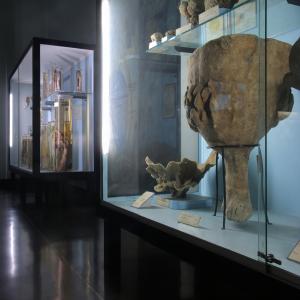Two rooms in the museum’s display section are dedicated to Invertebrates, with numerous specimens displayed in systematic order. However, as with the other collections, the majority of the specimens are located in the depositories, where tens of thousands of jars and boxes are stored. The collection of Porifera (sponges) is of great importance in that it comprises around 670 species and subspecies, 200 of which are types.The fascinating collection of Arachnids is one of the largest collections in the whole museum, comprising around 350,000 specimens, the majority of which are from exotic locations. The Burmese, Malaysian and Papuan specimens formed the basis for studies conducted by Tord Tamerlan Thorell (1830-1901), a Swedish specialist who had moved to the Ligurian coast for health reasons and lived as a guest of Giacomo Doria for years. Thorell published over 3,500 pages of work in Annali, all written in Latin, describing hundreds of new species, the majority spiders. The Crustaceans collection features around 30,000 specimens, with good representation of all the main groups. The collection of Myriapoda (Chilopoda or centipedes and Diplopoda or millipedes) is highly extensive, comprising around 100,000 specimens. The nucleus of the Molluscs collection dates back to 1857, when a 17-year-old Giacomo Doria began the “Collezione dei Fratelli Doria” [Doria Brothers’ Collection] with his older broche Marcello (1828-1894). The two brothers collected samples extensively, mainly in La Spezia. The malacological collection contains around 600,000 specimens, the majority of which are dried.









